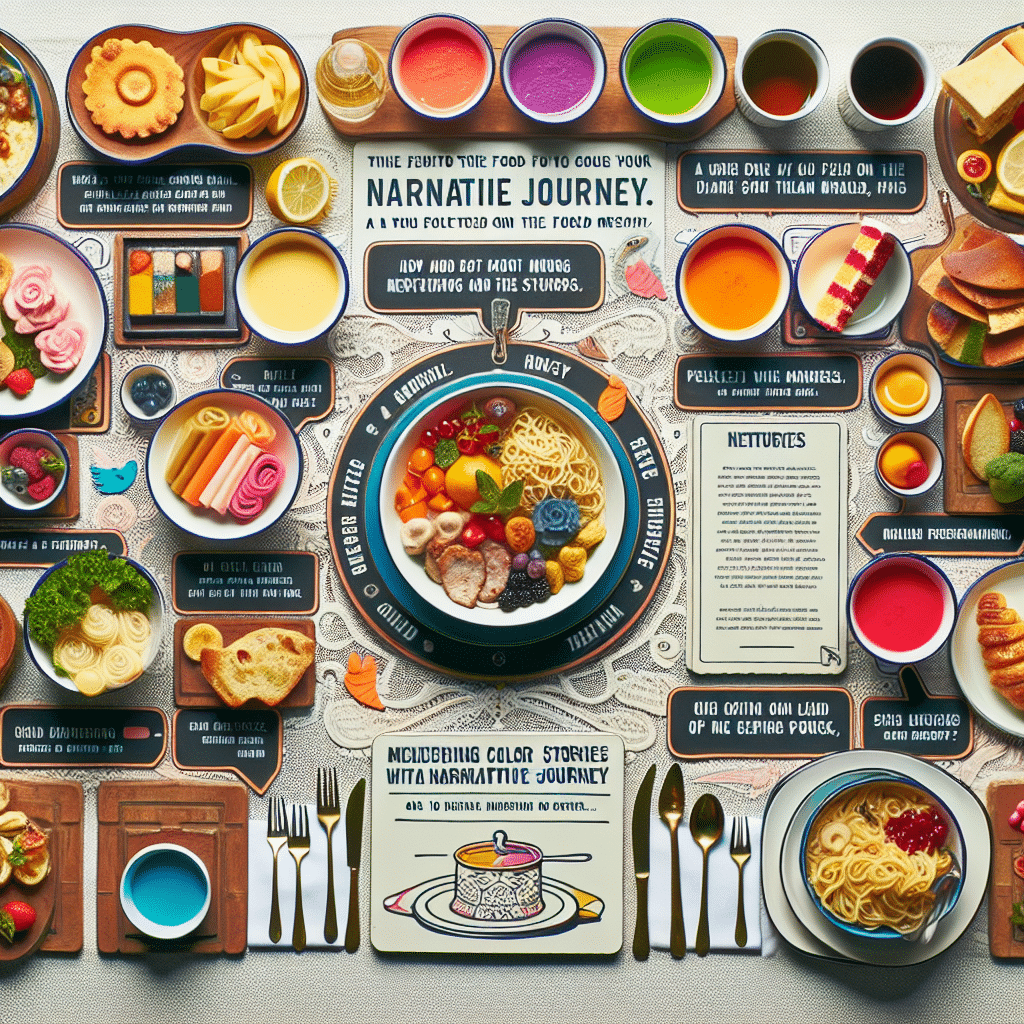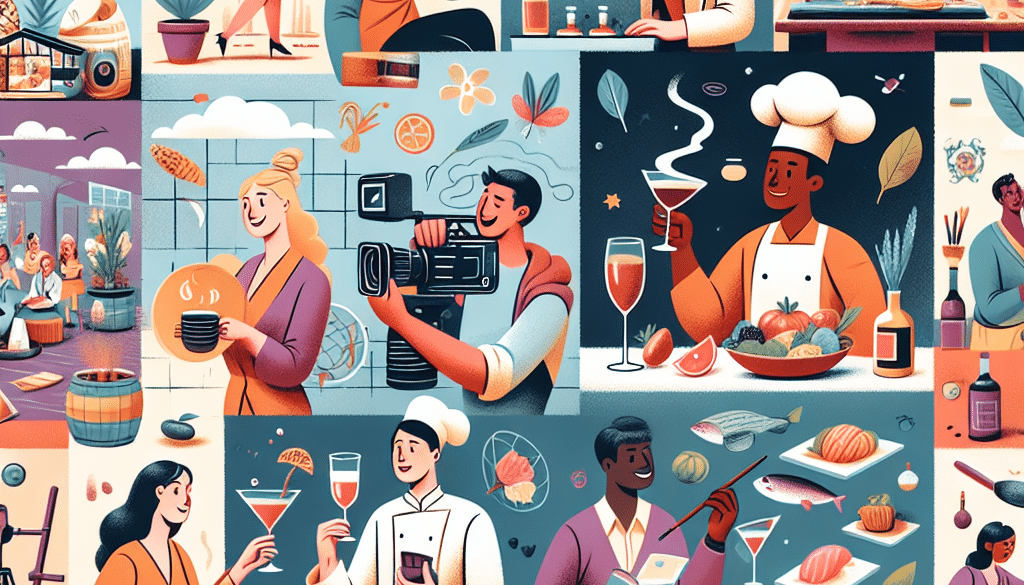10 Expert Tips for Storytelling in Food and Beverage Marketing
Table of Contents
- Storytelling in Food and Beverage Marketing: Harnessing the Power of Narrative
- Why Storytelling Resonates in Food and Beverage Marketing
- 10 Expert Tips for Effective Storytelling in Food and Beverage Marketing
- 1. Know Your Audience
- 2. Emphasize Authenticity
- 3. Highlight the Origin
- 4. Focus on the Experience
- 5. Use Visuals to Enhance Your Story
- 6. Leverage Social Proof
- 7. Be Consistent Across Channels
- 8. Engage the Senses
- 9. Create Characters
- 10. Keep It Simple
- Examples and Case Studies
- Conclusion: The Art of Storytelling in Marketing
- Discover ETprotein’s High-Quality Protein Products
Storytelling in Food and Beverage Marketing: Harnessing the Power of Narrative

Storytelling has been an integral part of human culture since time immemorial. It’s how we make sense of the world, share experiences, and connect with one another. In the realm of food and beverage marketing, storytelling is not just a buzzword; it’s a strategic tool that can captivate audiences, build brand loyalty, and drive sales. By weaving a compelling narrative around their products, brands can differentiate themselves in a crowded marketplace and create a lasting emotional bond with consumers.
Why Storytelling Resonates in Food and Beverage Marketing
Before diving into expert tips, it’s crucial to understand why storytelling is so effective in the food and beverage industry. Stories have the power to evoke sensory experiences, memories, and emotions. They can transport consumers to the origin of a product, highlight the craftsmanship behind it, or align the brand with a particular lifestyle or set of values. In an industry where taste and experience are paramount, a well-told story can be the difference between a product that’s simply consumed and one that’s truly savored.
10 Expert Tips for Effective Storytelling in Food and Beverage Marketing
1. Know Your Audience
Understanding your target demographic is the first step in crafting a narrative that resonates. Consider their values, desires, and lifestyle. What kind of story would appeal to them? Are they health-conscious millennials or families looking for convenience? Tailor your story to speak directly to their interests.
2. Emphasize Authenticity
Consumers crave authenticity, especially when it comes to what they eat and drink. Share the real stories behind your products, whether it’s the family recipe that inspired your brand or the sustainable practices you employ. Authenticity builds trust and credibility.
3. Highlight the Origin
People often want to know where their food comes from. Use storytelling to take them on a journey to the source of your ingredients. This can be particularly effective for products with a unique geographical origin, like single-origin coffee or artisanal cheese.
4. Focus on the Experience
Food and drink are about more than just sustenance; they’re about the experience. Craft stories that paint a picture of the joy, comfort, or adventure that your product can bring into someone’s life.
5. Use Visuals to Enhance Your Story
A picture is worth a thousand words, and in food and beverage marketing, visuals are key. Use high-quality images and videos to complement your narrative and give consumers a tantalizing glimpse of your products.
6. Leverage Social Proof
Stories from real customers can be incredibly persuasive. Share user-generated content, testimonials, and reviews to show how others are enjoying your products. This not only provides social proof but also helps build a community around your brand.
7. Be Consistent Across Channels
Your story should be cohesive whether a consumer encounters it on social media, your website, or packaging. Consistency reinforces your brand message and helps build recognition.
8. Engage the Senses
Use descriptive language to engage all five senses. Describe the aroma of freshly baked bread or the sound of a fizzy drink being poured. Sensory details can make your story more vivid and memorable.
9. Create Characters
Characters can give your brand a face and personality. This could be the founder, the farmers who grow your ingredients, or even a fictional mascot. Characters make your brand more relatable and memorable.
10. Keep It Simple
While details are important, your story should be easy to follow. Avoid industry jargon and focus on the human element. A simple, relatable story is often the most effective.
Examples and Case Studies
Let’s look at some successful examples of storytelling in food and beverage marketing:
- Guinness: Guinness ads often tell stories of friendship and community, aligning the brand with values of togetherness and tradition.
- Chobani: Chobani uses the story of its founder’s immigrant journey and commitment to quality ingredients to build a narrative of the American Dream and healthy living.
- Coca-Cola: Coca-Cola’s “Share a Coke” campaign personalized the brand by featuring names on bottles, encouraging people to share their own stories of connection.
These brands have mastered the art of storytelling, creating campaigns that consumers remember and engage with.
Conclusion: The Art of Storytelling in Marketing
In conclusion, storytelling in food and beverage marketing is a powerful strategy that can set a brand apart. By knowing your audience, emphasizing authenticity, highlighting the origin, focusing on the experience, using visuals, leveraging social proof, maintaining consistency, engaging the senses, creating characters, and keeping it simple, brands can craft stories that captivate and resonate with consumers. Remember, a good story does more than sell a product; it creates an experience that consumers want to be a part of.
Discover ETprotein’s High-Quality Protein Products
If you’re in the food and beverage industry looking to enhance your product offerings with high-quality proteins, consider ETprotein. Their extensive range of organic bulk vegan proteins and L-(+)-Ergothioneine (EGT) products are perfect for creating nutritious and delicious food and beverage items that align with consumer demand for health and wellness. With ETprotein’s commitment to non-GMO, allergen-free ingredients, and high purity standards, you can confidently tell a story of quality and care that will resonate with your customers.
About ETprotein:
ETprotein, a reputable protein and L-(+)-Ergothioneine (EGT) Chinese factory manufacturer and supplier, is renowned for producing, stocking, exporting, and delivering the highest quality organic bulk vegan proteins and L-(+)-Ergothioneine. They include Organic rice protein, clear rice protein, pea protein, clear pea protein, watermelon seed protein, pumpkin seed protein, sunflower seed protein, mung bean protein, peanut protein, and L-(+)-Ergothioneine EGT Pharmaceutical grade, L-(+)-Ergothioneine EGT food grade, L-(+)-Ergothioneine EGT cosmetic grade, L-(+)-Ergothioneine EGT reference grade and L-(+)-Ergothioneine EGT standard. Their offerings, characterized by a neutral taste, non-GMO, allergen-free attributes, with L-(+)-Ergothioneine purity over 98%, 99%, cater to a diverse range of industries. They serve nutraceutical, pharmaceutical, cosmeceutical, veterinary, as well as food and beverage finished product distributors, traders, and manufacturers across Europe, USA, Canada, Australia, Thailand, Japan, Korea, Brazil, and Chile, among others.
ETprotein specialization includes exporting and delivering tailor-made protein powder and finished nutritional supplements. Their extensive product range covers sectors like Food and Beverage, Sports Nutrition, Weight Management, Dietary Supplements, Health and Wellness Products, and Infant Formula, ensuring comprehensive solutions to meet all your protein needs.
As a trusted company by leading global food and beverage brands and Fortune 500 companies, ETprotein reinforces China’s reputation in the global arena. For more information or to sample their products, please contact them and email sales(at)ETprotein.com today.














